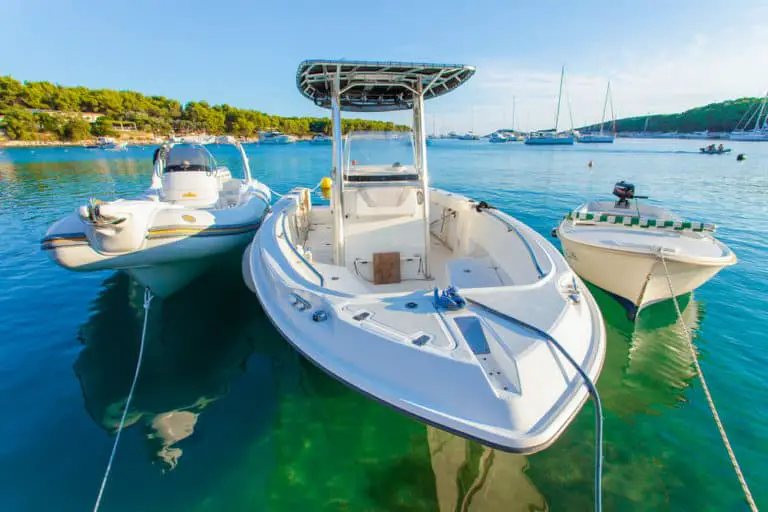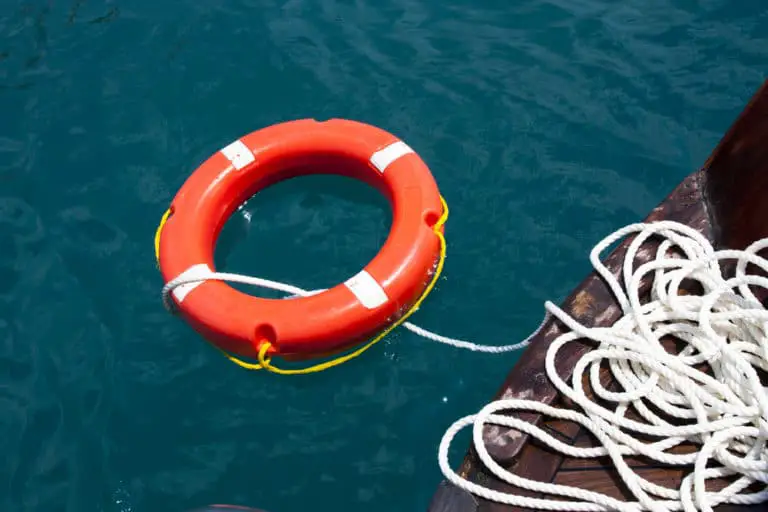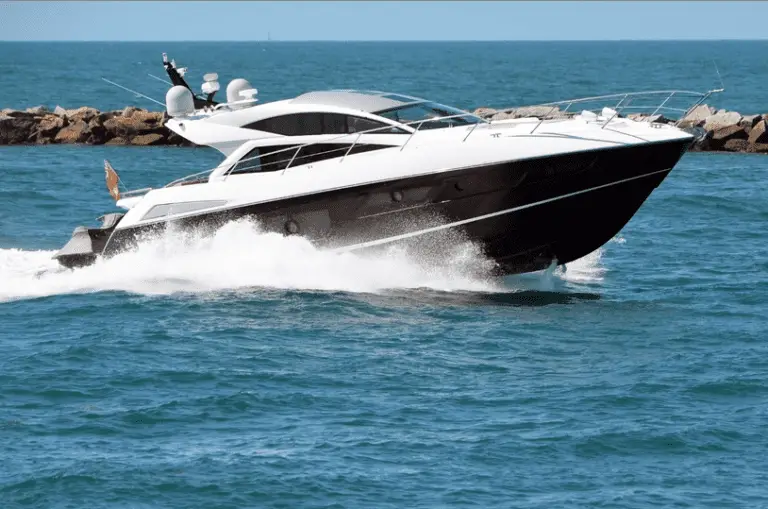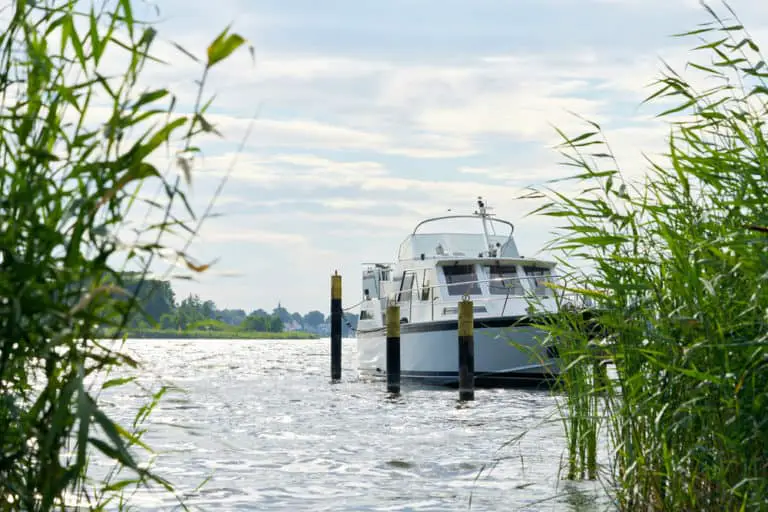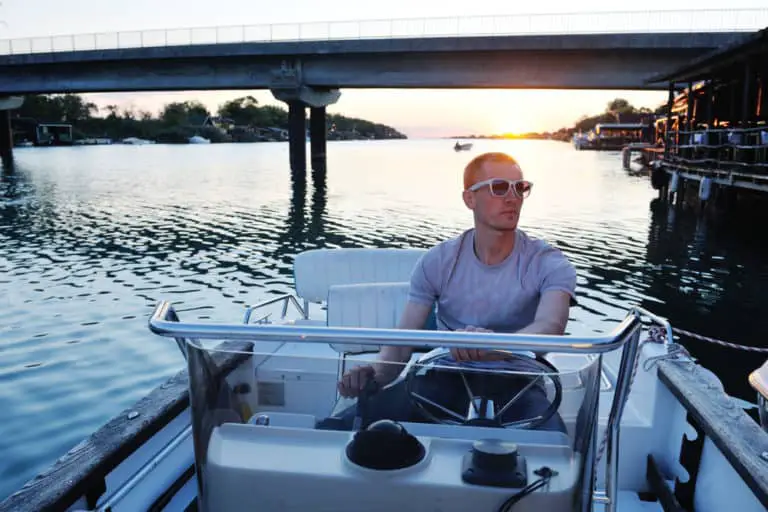How to Drive a Boat? (Step-by-Step Guide)
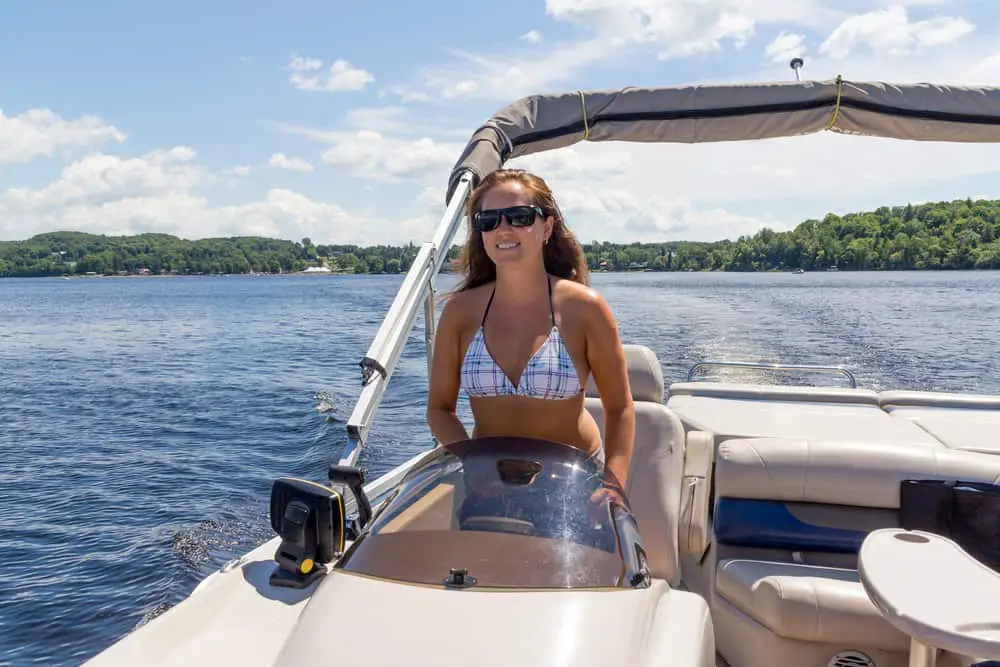
Now that you have a boat, or are close to picking up that new toy, one major hurdle you will need to clear is going to be learning all you can about driving a boat properly. It can get a little intense at times, so stick with us until the end, and you’ll be ready to hit the water.
- How to Drive a Boat?
- Steering a Boat
- Slowing a Boat
- Reversing a Boat
- Stopping a Boat
- Driving Different Types of Boats
- How to Drive a Boat in Waves?
- Driving Inboard vs. Outboard Motors
How to Drive a Boat?
There are many different types of boats, but this guide will mainly focus on boats that have a separate engine compartment. This means the engine, as well as parts of the boat controls and many other components, are largely hidden from view in a compartment below deck or near the stern.
While the general process of driving the boat will be essentially the same for both inboard and outboard powered boats, there may be small variances from type to type. Before you actually set out, you’ll need to run through your pre-departure checklist, which will help you ensure that you and your vessel are equipped with everything you may need for your voyage.
1. Run the Blower
Before you even think of starting a boat, you need to make sure it is safe to do so. If your boat has an engine compartment, this means it may potentially be full of gasoline vapor which can be disastrous if ignited by a starting engine. Engine compartments must be ventilated with a blower and the first thing you should do before anything else is run your engine compartment blower.
Gasoline evaporates at a relatively low temperature, so the engine compartment will have fumes and vapors by design. The USCG has regulations in place that mandate every boat with an engine compartment must be properly and adequately ventilated with a blower. Finding out how to operate your blower may be your first official foray into learning to operate a boat, but it should be simple enough, usually just a toggle on the dash.
Once that is running, take a few minutes to run down your pre-departure checklist.
2. Start the Engine
So you have vented your engine compartment, checked and double-checked your pre-departure checklist, what else is there except to start the engine! If you have a newer boat, the chances are probably fifty-fifty between having a key ignition or a push-button ignition, but they all function essentially the same. Also, in most cases, push-button engines still have a key, it just serves as more of a security feature.
Put your key in the ignition, or if you have a really fancy setup, make sure your keyless fob is on your person. For keyed ignitions, you will need to turn the key just like in any other vehicle, either to “start” or simply to “run”. Push-button ignitions will need you to, well, push the button, though some push-button setups will require an RFID fob within range to “unlock” the ignition. If you have gotten this far and she’s not starting up, you may have to check your kill switch.
Kill Switch
Nearly every powered boat will have some version of a kill switch on it, to disengage engine function in the event of the absence of an operator. This is a safety feature that needs to be kept engaged in order to keep the engine running. This switch is kept engaged by a small clip that is then attached to the driver’s lifejacket, vest, belt loop, or similar, while they are piloting a boat.
The kill switch is usually a red knob or button that is next to the ignition or sometimes the throttle. It is spring-loaded, so it must be pulled out and then held in position with the clip, to close the ignition circuit. If, while driving a boat, the operator leaves the helm while connected, the engine will shut off. Connecting the kill switch clip should be on your pre-departure checklist.
Throttle Position
Normally when you’re learning to drive a boat you won’t have to worry very much about the throttle position, but it can be a potential cause of the boat engine not starting when engaged. For the engine to start, the throttle must be in the neutral position. This is so that upon starting, the engine is not already in gear and under throttle load.
In the majority of situations, your throttle will already be in the neutral position when you are ready to start it up. However, in some cases, the throttle may have been accidentally changed while in storage, or even while the kids are “helping” to wash or prep the boat. It may also be out of neutral if the engine was disengaged with the safety cutoff while underway.
Most times, neutral will be the 12 o’clock position, meaning the throttle handle will be perpendicular to the plane of the water with the lock engaged.
3. Remove the Lines
Once you have your pre-departure checklist done, the engine is warmed up, and you think you are ready to drive the boat, there is one more thing you will need to do before you can physically leave. You will need to remove your mooring lines.
Boats that are moored or docked, whether it is a personal boat slip that is rented monthly at your local harbor, or at a marina while you’re getting lunch and fuel, are secured to the dock with lines. These lines are tied around cleats that are anchored to the dock.
In many cases, you will be able to remove your own lines, since you will be able to reach the cleats from the deck of the boat. In other situations, there may be a dock worker or fellow boater who is able to untie your vessel and toss the rope ends to you.
4. Start Moving
Once you and your vessel are free of the moorings, you are ready to get moving and start learning the driving basics. Depending on how you are docked, you may be able to simply pull forward and leave the dock area. In other cases, such as covered boat slips, you may be required to back the boat out before getting underway.
In order to begin the actual movement required for motorboat driving, you will need to put the engine in gear, whether that is forward or reverse. To engage the engine, grab the throttle control and squeeze the button on the underside, then gently move the throttle forward or backward until you feel it click into gear, then release the button.
If you were gentle enough, you should find that your vessel is now in gear at idle speed. This allows for slow, controlled movement, usually in “no wake” zones like docks and harbors. Moving the throttle control a little further will increase the RPMs and give you more power while in gear.
5. Adjust the Throttle
The final part of your initial boat movement will be adjusting the throttle as the situation warrants. Since speed is central to boat control, so by learning how to properly adjust the throttle, boat control becomes much easier. From neutral, as you move the throttle handle forward you increase the amount of fuel/air mixture you provide to your engine, the equivalent of “stepping on the gas”.
Throttle control is essential if you want to learn to drive a boat safely and efficiently. Not only is slowing down more complex than just taking your foot off of the pedal like in a car but there are no brakes on a boat. In order to slow down, you will need to pull back on the throttle as it will not automatically return to idle on its own.
Maintaining a high degree of situational awareness is going to be hard work during your first time boating, but you will need it so that you will always be prepared to make throttle adjustments when the situation warrants. This may mean posting a lookout to assist, in the case of larger boats.
Steering a Boat
Even though steering a boat and steering a car are similar in principle, wheel right turns right, wheel left turn left, and so on, you will find that the steering required for effective maneuvering can sometimes be quite complex. One of the skills that are frequently found to be relatively difficult when new boaters learn to operate a boat is the steering needed for efficient docking, for example.
So many factors influence a boat’s turning ability, like wind, boat speed, engine speed, current, and waves & wakes.
You will be able to steer a boat in a much tighter radius when you are stationary or at a low speed, than when you are underway at higher speeds. Tighter turning at lower speeds is also much less dangerous than turning at high speed, which in some extreme situations can cause the boat to capsize. Always reduce speed sufficiently before making large corrections.
Slowing a Boat
You know that boats don’t have brakes, and you know that you have to manually reduce the throttle when a reduction in speed is needed, but it’s not that simple, unfortunately. The stopping distance for every vessel will be a bit different, based on a number of factors. You should know how to handle your boat in any situation you may encounter.
You will need to become intimately familiar with how your boat responds to different conditions and speed changes. Also, be sure you understand how your inertia will affect your passengers. There are no seatbelts on boats, and sudden changes in speed or direction can cause injury on the decks and even overboard situations.
In situations where you may need to slow a boat much faster than usual, there are options. The most popular option is to do a power-assisted brake, by shifting into neutral and pausing, then shifting into reverse and increasing the throttle.
Reversing a Boat
Lots of new boaters don’t think of it specifically, but you will need to steer a boat in reverse occasionally. In many cases, this will be at low speed, in controlled situations, like docks, marinas, harbors, and so on. There are other times when you may need to reverse the boat in an emergency situation as well, though hopefully, those will be rare.
You know how to drive a boat forward and how it handles with the engine pushing it, so you will likewise need to get used to how it feels to pull the boat backward with the engine. In situations like docks and marinas, the reverse will be more powerful than you initially expect, so be sure to use small throttle adjustments. If you need to reverse the boat in an emergency situation always make sure you pause after hitting neutral.
Stopping a Boat
Stopping a boat is one of the boating basics, and to do it properly you will need to be able to balance well. That may sound confusing, hang in there. When you are going forward at a particular rate of speed and cut the engine, the boat continues to travel along its previous course gradually slowing down.
If you need to stop the boat, you will need to apply a force approximately equal to that which is carrying you forward. Usually, this can be done with a slight nudge to reverse, though some situations may need a much faster or immediate correction, in which case the nudge to reverse may be more than slight.
You must remember, however, the intense force that is going to be at work. You will have a very sudden and large decrease in your forward momentum, which can cause serious injury if you and any passengers are not bracing themselves for the change. The basics of driving include being able to stop effectively and safely.
Driving Different Types of Boats
There are dozens of different types of boats, and they will all drive and handle differently on the water. The most common types of boats you will see in both coastal and fresh waters will often be a varied mix of different types of pleasure and leisure vessels. These will include fishing boats, pontoons, and sailboats.
These boats can often be used for relatively interchangeable purposes, though they drive and handle very differently. Some even require special considerations when operating them, or special training and certifications.
Fishing Boats
Fishing boats come in a wide range of sizes from small boats suitable for ponds, lakes, and rivers, to larger vessels that can chase sportfish in the Gulf or either coast. In general, they will have v-shaped hulls, which will help them to cut through waves and weather.
Often, fishing boats will have engines relative to their size, so they will be able to maneuver nimbly. In the case of larger boats, they will usually have incredibly powerful engines, so small throttle adjustments can mean big speed changes.
Pontoon Boats
Everyone loves pontoon boats, they can be used as the traditional party barge, they can be used to fish, and some more powerful pontoon boats will even be equipped to pull tubes. While they are fun, they are not very fast, and not very maneuverable.
Pontoons are made a bit less maneuverable by the large buoyant pontoons that give them their name, and their ability to float. While these boats are much more accommodating in their deck space, they will take some careful navigation and maneuvering, particularly when docking.
Sailboats
Sailboats are most often seen in coastal waters, though the Great Lakes also has a thriving sailing population. Sailboats are a type of boat that will not only need special training to operate but there are even sailing certificates to increase your proficiency in the art.
Sailboats aren’t often under power, so they have their own unique processes for driving straight and turning. In many cases, sailboats will need at least a small crew of people to operate them well. Very small boats may be operated by just one or two people.
How to Drive a Boat in Waves?
Once you have learned the basics of boat driving and have been out on the water for a few hours, it is going to be very likely that you encounter some form of waves. The most common form of waves that you may encounter are waves from other boaters. These are the waves that are generated by a boat moving through the water and can be quite dangerous if taken wrong. Waves are also common when winds begin to increase in speed.
The safest way to drive a boat in waves is to take your time, trim down, and try to take waves perpendicular to the long axis of your boat. By slowing down you make sure that you maintain control of your vessel. By changing your trim down, you can help the bow of the boat to stay elevated and avoid swamping. By letting your bow “cut” through the waves, you can minimize the chances of a wave rolling your boat and capsizing it.
Driving Inboard vs. Outboard Motors
We’ve mentioned that this guide is going to be centered more significantly around inboard boats, or boats with an engine compartment, than outboards. Outboards have the engines mounted directly to the stern of the boat in plain view. While we focused on inboards, this information can be readily adapted to outboards as well, with only a few minor changes.
Most of the process is going to be the same, however, when starting up you won’t have to worry about starting up your blower to vent the engine compartment since they are already vented to the environment. In some outboards, the steering may be via a tiller, so there won’t be a steering wheel. Steering these boats requires that someone hold the tiller and manually turn the engine and control the throttle with it.
FAQ
How to drive a boat with an inboard motor?
With inboard motors you need to be particularly careful to ventilate the engine compartment before starting the engine, then start the engine, adjust the trim, and drive.
How to drive a boat with an outboard motor?
Outboard motorboats are generally very straightforward to operate. Simply prime the engine, start it, trim it, and drive away safely.
How to drive a twin-engine boat?
Twin-engine boats are often considered to be more maneuverable than single-engine boats since they can control each engine’s turning ability separately.
How to drive a powerboat?
Driving a powerboat requires much more attention to be paid to throttle as well as to trim and turning. The speed of powerboats can be dangerous when turning.
How to drive a cruise ship?
Driving a cruise ship is much more complex than a conventional vessel, obviously due to its size. Captains go through extensive training and have large crews to assist.
How to drive a yacht?
Driving your own yacht is always possible, even if you have a hired captain or deckhand. They will step aside and merely help with emergencies as needed.
How to drive a sailboat?
Sailboats require a complex process of rigging and sail operation in order to get underway, and they are usually steered by a tiller that operates the rudder.
How to drive a motorboat?
Once you start it up, be sure that you are obeying all posted signs and buoys, and be sure you follow all local guidelines for licensing.
How to drive a speed boat?
Driving a speed boat is just like any other boat, except that you need to give much more care to turning since turning at high speed can be disastrous.
How to drive a bass boat?
Driving a bass boat will often only require a small motor, and since they are relatively small and have flat bottoms, they should not be used in severe weather.
How to drive a pontoon boat?
Pontoon boats can be incredibly fun and relaxing, but you will need to make sure you can still control the larger boat with a comparatively smaller engine.
How to drive a boat in waves?
Driving a boat in waves is safest when you reduce your speed, trim down so you raise the bow of your boat, and orient your boat bow first into the oncoming waves.
Is it difficult to drive a boat?
Like anything else, learning to drive a boat will take time and effort, but it is no more difficult, skill-wise, than driving other vehicles.
What qualifications do you need to drive a boat?
Many areas require a license or safety certificate to legally operate a boat under a certain age. If this certificate is endorsed by NASBLA it can likely be used in all states.
How do you safely drive a boat?
The best way to safely drive a boat is to be sure that you know all applicable USCG regulations and procedures, as well as taking an online safety course.
How to start a boat?
Be sure the safety is engaged, insert the key, ensure the throttle control is in neutral, and turn the key. Some boats have push-button ignition that only requires a touch.
Can you drive your own boat?
Of course! Many people enjoy driving their own boat, both for their profession as well as for leisure and pleasure activities and hobbies.
How do you start a boat out of water?
The main thing you need to be sure of before starting your boat out of water is that you have attached your freshwater supply per the manufacturer’s instructions.


